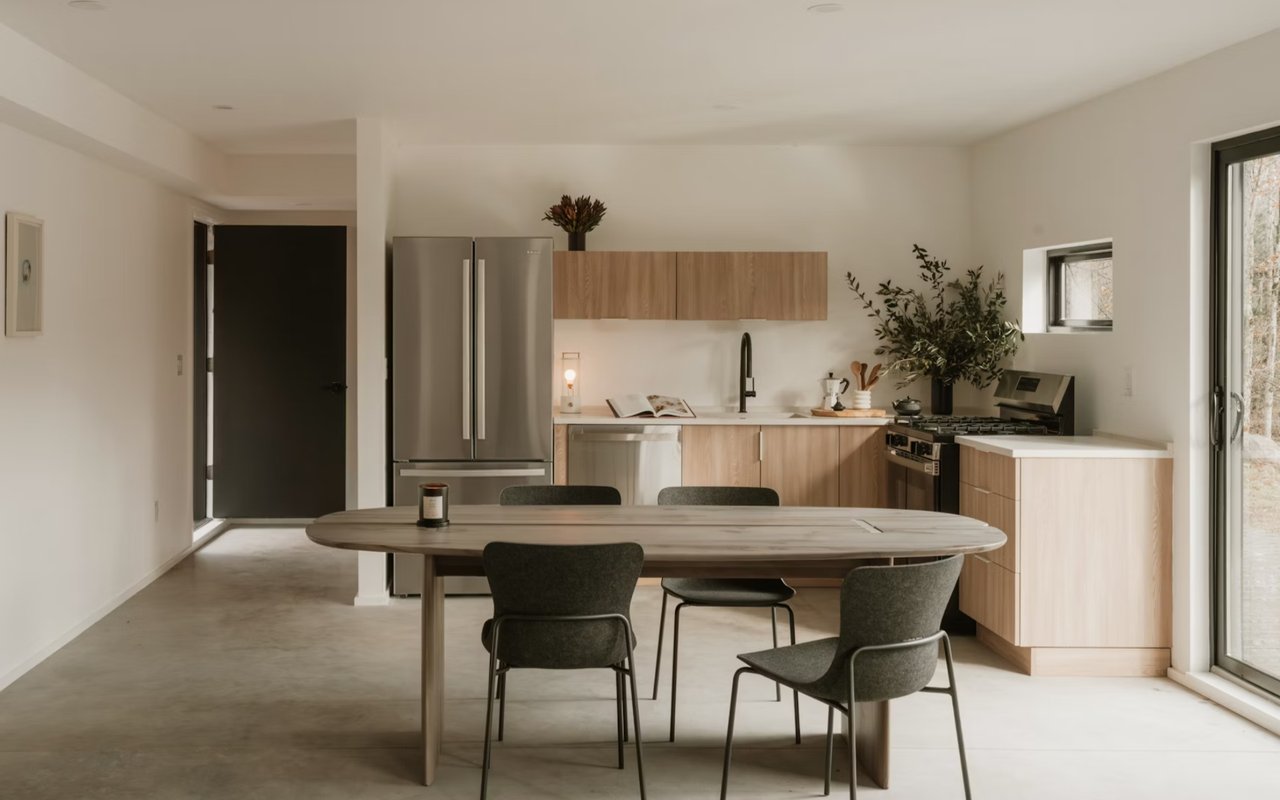When it comes to real estate, many factors influence the value of a home, and one of the most intriguing is the age of the property. Does an older home automatically mean less value? Does new construction guarantee a higher price? The relationship between a home’s age and its market value is more complex than it might seem. In this blog, we’ll explore how the age of a home impacts its value, what buyers and sellers in Missouri should consider, and how The Ryan Tradition can guide you through every step of the process.
1. The Charm and Challenges of Older Homes
Older homes, especially those built before the 1950s, often come with a unique character and architectural features that are hard to find in newer constructions. High ceilings, detailed moldings, hardwood floors, and intricate craftsmanship are just a few of the hallmarks of older homes that can increase their appeal and, in some cases, their market value.
However, older homes also come with their fair share of challenges. Outdated electrical systems, plumbing issues, lack of insulation, and old HVAC systems can all impact the home’s desirability and market value. Buyers considering older properties need to be prepared for potential renovations and repairs. The cost of bringing an older home up to modern standards can significantly affect the overall investment.
Additionally, older homes may have unique zoning restrictions or require more maintenance, which can be a deterrent for some buyers. For sellers of older homes, it’s essential to highlight both the historical charm and any updates made to the property to maintain a competitive edge in the market.
However, older homes also come with their fair share of challenges. Outdated electrical systems, plumbing issues, lack of insulation, and old HVAC systems can all impact the home’s desirability and market value. Buyers considering older properties need to be prepared for potential renovations and repairs. The cost of bringing an older home up to modern standards can significantly affect the overall investment.
Additionally, older homes may have unique zoning restrictions or require more maintenance, which can be a deterrent for some buyers. For sellers of older homes, it’s essential to highlight both the historical charm and any updates made to the property to maintain a competitive edge in the market.
2. The Appeal of Newer Homes
Newer homes, particularly those built within the last 20 years, generally appeal to buyers looking for move-in-ready properties with modern amenities. These homes often come with open floor plans, energy-efficient appliances, and more contemporary designs, which can attract higher bids, especially from younger buyers.
One of the major advantages of newer homes is that they require less immediate maintenance. The roof, foundation, and major systems are typically in better condition, reducing the likelihood of significant repairs in the near future. This can lead to higher market value, as buyers are willing to pay a premium for a property they won’t have to invest heavily in post-purchase.
However, the downside is that newer homes may lack the unique charm and character found in older homes. Many new builds are part of large developments with homes that look very similar, which can be less appealing to buyers who want something distinctive. In Missouri, where neighborhoods are rich in history and architecture, the appeal of new versus old can vary widely based on location and buyer preferences.
One of the major advantages of newer homes is that they require less immediate maintenance. The roof, foundation, and major systems are typically in better condition, reducing the likelihood of significant repairs in the near future. This can lead to higher market value, as buyers are willing to pay a premium for a property they won’t have to invest heavily in post-purchase.
However, the downside is that newer homes may lack the unique charm and character found in older homes. Many new builds are part of large developments with homes that look very similar, which can be less appealing to buyers who want something distinctive. In Missouri, where neighborhoods are rich in history and architecture, the appeal of new versus old can vary widely based on location and buyer preferences.
3. The Middle Ground: Homes Built Between 1950 and 1990
Homes built in the mid-20th century often strike a balance between the charm of older properties and the convenience of newer construction. These homes tend to feature larger lots, mature landscaping, and a sturdier build compared to newer homes, while also offering a more modern layout than those built before 1950.
Many mid-century homes in Missouri were built with durable materials and have stood the test of time, which can contribute to their enduring market value. However, like older homes, they may require some updates, particularly in areas such as electrical systems, plumbing, and energy efficiency. For buyers, these homes present an opportunity to invest in a solid property with room for personalized improvements.
For sellers, mid-century homes can be attractive to a wide range of buyers, particularly those who appreciate a home with a solid foundation and the potential to add value through renovations. Highlighting any updates made to the home, especially those related to energy efficiency or modern conveniences, can boost its appeal and market value.
Many mid-century homes in Missouri were built with durable materials and have stood the test of time, which can contribute to their enduring market value. However, like older homes, they may require some updates, particularly in areas such as electrical systems, plumbing, and energy efficiency. For buyers, these homes present an opportunity to invest in a solid property with room for personalized improvements.
For sellers, mid-century homes can be attractive to a wide range of buyers, particularly those who appreciate a home with a solid foundation and the potential to add value through renovations. Highlighting any updates made to the home, especially those related to energy efficiency or modern conveniences, can boost its appeal and market value.
4. Location, Location, Location: How Age and Market Value Interact with Neighborhood Trends
The relationship between a home’s age and its market value is also heavily influenced by its location. In certain neighborhoods, older homes may be highly desirable due to their historical significance and proximity to city centers. For example, in historic districts, buyers may be willing to pay a premium for a well-preserved older home, especially if the area is known for its charm and character.
On the other hand, in newer suburban developments, the demand for modern, energy-efficient homes may drive up the market value of newer properties. Buyers in these areas may prioritize convenience, space, and the latest amenities, making newer homes the more valuable option.
In Missouri, where a mix of historic and new developments exists, the market value of a home based on its age can vary significantly depending on the neighborhood. Homes in established areas with good schools, amenities, and easy access to major cities are likely to hold their value regardless of age, provided they are well-maintained.
On the other hand, in newer suburban developments, the demand for modern, energy-efficient homes may drive up the market value of newer properties. Buyers in these areas may prioritize convenience, space, and the latest amenities, making newer homes the more valuable option.
In Missouri, where a mix of historic and new developments exists, the market value of a home based on its age can vary significantly depending on the neighborhood. Homes in established areas with good schools, amenities, and easy access to major cities are likely to hold their value regardless of age, provided they are well-maintained.
5. Renovations and Updates: The Equalizer Between Old and New
One of the key factors that can mitigate the impact of a home’s age on its market value is the extent of renovations and updates. A well-maintained older home with modern updates can often compete with newer homes in terms of market value. Upgrades to kitchens, bathrooms, and living spaces can increase the appeal of older homes, while newer homes may benefit from cosmetic upgrades or energy-efficient enhancements.
For sellers, investing in strategic updates can pay off by attracting more buyers and increasing the final sale price. However, it’s essential to choose renovations that offer a good return on investment. Simple updates like repainting, updating fixtures, and improving curb appeal can go a long way without breaking the bank.
Buyers should also consider the cost of future renovations when evaluating the market value of older homes. A home that appears to be a bargain may require costly updates down the line, which could offset any initial savings.
For sellers, investing in strategic updates can pay off by attracting more buyers and increasing the final sale price. However, it’s essential to choose renovations that offer a good return on investment. Simple updates like repainting, updating fixtures, and improving curb appeal can go a long way without breaking the bank.
Buyers should also consider the cost of future renovations when evaluating the market value of older homes. A home that appears to be a bargain may require costly updates down the line, which could offset any initial savings.
6. What Buyers and Sellers Should Know About Home Age and Market Value
For both buyers and sellers, understanding how home age affects market value is crucial to making informed decisions. Buyers need to weigh the charm and character of older homes against the potential for higher maintenance costs. Conversely, newer homes may offer lower immediate costs but could lack the personality and uniqueness some buyers crave.
Sellers should be aware of the strengths and weaknesses associated with their home’s age and market accordingly. For older homes, emphasize historical features, character, and any recent upgrades that modernize the space. For newer homes, highlight energy efficiency, modern amenities, and low maintenance costs.
Sellers should be aware of the strengths and weaknesses associated with their home’s age and market accordingly. For older homes, emphasize historical features, character, and any recent upgrades that modernize the space. For newer homes, highlight energy efficiency, modern amenities, and low maintenance costs.
The Ryan Tradition: Your Trusted Partner in Missouri Real Estate
Decoding the relationship between a home’s age and its market value requires expert guidance. Whether you’re buying a charming historic property or selling a modern home, The Ryan Tradition has the local knowledge and expertise to help you navigate the complexities of the Missouri real estate market. With years of experience in matching buyers and sellers with their perfect homes, John Ryan and his team are committed to providing personalized service that meets your unique needs.
Contact The Ryan Tradition today to get started on your real estate journey with a trusted partner by your side. You may also check unique homes for sale in Frontenac, MO!
Contact The Ryan Tradition today to get started on your real estate journey with a trusted partner by your side. You may also check unique homes for sale in Frontenac, MO!




